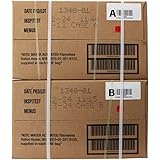Preparation for Vehicle Failure
Understanding Your Environment
When I think about transportation in a survival situation, I always start by looking at my surroundings. I mean, the environment plays a huge role in how I prepare. Whether I’m in a city or the great outdoors changes my game completely. In urban areas, I can often rely on public transport, but in the wilderness, I’m looking at walking, biking, or even some good old-fashioned hitchhiking.
It’s super important to understand the terrain I’m dealing with. Is it hilly, flat, or full of dense forest? Each type of ground has its challenges in terms of movement. By scouting my route and identifying potential obstacles, I can strategize my next moves way more effectively.
Lastly, I always take the weather into account. I’ve had days ruined by sudden rainstorms, which left me stranded or scrambling for cover. Knowledge of weather patterns can mean the difference between staying put or navigating safely to my destination.
Essential Gear to Have
Alright, gear is my best friend when vehicles fail. I’m talking about items that can literally save my bacon. A solid backpack stocked with water, non-perishable food, a first-aid kit, and a multi-tool is key. I can’t tell you how many times that extra bottle of water came in clutch on a long trek!
I always include a portable power bank too. It’s a lifesaver for keeping my phone charged, especially when I’m relying on GPS or need to keep in touch with folks. Let’s be real; nobody wants to end up lost without a way to call for help.
And don’t forget about clothing! Comfort and utility are everything. I recommend layers – something that can protect against the elements but also allows movement. Sturdy hiking boots? Yes, please! Keeping my feet happy can make or break any journey.
Planning Ahead
Planning is a must! I can’t stress enough how important it is to map out possible routes before a trip. Knowing alternative paths in advance makes me feel way more secure in case of vehicle trouble. I’ve had to turn back because I didn’t know where I was going, and trust me, it was a gut-wrenching moment.
Besides routing, I set realistic time frames for my travel. The last thing I want is to be on the road—err, on foot—past sundown. Nighttime can be tricky for navigation and safety; I prefer to settle down for the night where it’s safe and warm.
== > What if ... Get a FREE Subscription to PREPARE
Lastly, I inform someone about my plans. This is crucial! I share my route and expected return time with a friend or family member. That way, if something goes awry, someone knows where to start looking for me. Better safe than sorry!
Alternate Transportation Options
Manual Methods of Transport
Sometimes, it’s all about using what I have at my disposal. When my vehicle isn’t an option, I’m looking at manual methods of transportation. Walking is the most basic, but let’s not overlook biking. If I’ve got my bike with me, I can cover more ground faster! Being able to pack light and move quickly? Now that’s my speed!
Then there’s the classic use of a skateboard or scooter if the terrain allows it—a great way to cruise while making things a little fun. Each of these methods requires some physical effort, but hey, I see it as a workout while I’m moving toward safety!
I’ve also become a bit of a pro at using public transport as a backup. I can usually find a bus or train within a few miles, which opens up my transport options significantly when my main ride packs it in.
Creative Solutions
This is where my creativity comes into play. If I’m stuck in a jam, I might try hitchhiking. A friendly wave and a smile can sometimes get me a ride when I least expect it! I’ve had great experiences with this, but I’m also cautious—it’s all about reading the vibe of others.
Carpooling with fellow travelers can be another option. I’ve met some interesting people along the way who’ve been kind enough to share a ride. When it comes to survival transportation, teamwork can definitely make the dream work.
And let’s not forget about looking for local resources. Sometimes I discover bike rentals or other local transport means nearby. Whether it’s a kayak on a river or a local tour service, exploring my options can lead to some exciting discoveries!
Technological Aids
Technology also has my back when vehicles fail. I always keep my smartphone charged because apps today can be lifesavers! From mapping services to social networks, I’m able to find the quickest routes, locate nearest service stations, or even check community boards for ride-sharing opportunities.
Plus, there are plenty of forums and apps focused on travel logistics that can provide me with fresh ideas or alternatives I hadn’t considered. Connecting with locals via these platforms opens doors I might have missed otherwise.
Another cool tech adoption is portable GPS devices. While I depend on my smartphone, having a separate GPS could come in handy, especially when battery life is crucial. Being prepared with these technological aids means I get to navigate through challenges with confidence!
Staying Safe on the Road
Basic Safety Tips
Safety first, right? I always keep a few basic safety tips in mind when I’m out there surviving without my wheels. Awareness of my surroundings is key; I constantly stay alert to changes around me. Whether it’s approaching strangers, animals, or environmental hazards, being aware can prevent danger before it strikes.
Also, it’s wise for me to avoid traveling at night unless absolutely necessary. Lack of visibility can lead to accidents or getting lost, and those are two things I want to sidestep at all costs. Instead, I plan my travels during daylight for that extra safety net.
A whistle or signal mirror can be handy little tools that I often carry. Whether I’m signaling for help or trying to attract attention, having these on hand can make a world of difference in emergencies.
Get Preparedness and Self-Reliance Tips. Subscribe Now!
Emergency Plans
No one wants to think they’ll get stuck, but I always prepare for the worst-case scenario. Creating an emergency plan gives me peace of mind. This plan includes identifying safe spots to rest, places to seek help, and signaling methods in case I need assistance.
I also keep a list of local emergency contacts and resources on my phone. That includes hospitals, police stations, and even the nearest friend or family member who can come to help if I call. Being proactive about this stuff can take the pressure off in those panic moments.
Lastly, I like to pack an emergency blanket and flashlight in my gear. Surviving the night may mean staying warm and illuminated, and these items can really help boost my morale and safety if I find myself in a pickle.
Trusting Your Instincts
Sometimes, it all boils down to gut feelings. I’ve learned to listen to my instincts. If something feels off—like a ride with a stranger or a route that just doesn’t sit right with me—I don’t hesitate to make changes. It’s better to err on the side of caution, you know?
I also trust my experiences. Each setback is a lesson that shapes how I react to future challenges. Reflecting on these moments gives me confidence in making quick decisions when I need to. I’ve come to rely heavily on this personal knowledge over time!
In the end, trusting myself and my instincts has kept me safe in many challenging situations. I may not have always been right, but leaning into that inner voice has guided me through some tricky patches on my travels.
Post-Vehicle Failure Strategies
Assessing the Situation
After a vehicle failure, the first thing I do is assess the situation. I look at what went wrong and the resources I have available. Has a tire gone flat? Is it something I can fix, or is it time to call in the cavalry? Understanding the problem is key before I make any hasty decisions.
I also check my supplies and see what I can use. If I have a patch kit or a spare tire, I’ll consider tackling the issue myself. No vehicle is a total loss if I can salvage something from it!
Moreover, I take note of my surroundings. Knowing where I am and what’s nearby is crucial for determining my next steps. It’s all about picking a smart way forward and positioning myself for future transportation options!
Communicating with Others
The power of communication can’t be underestimated. I always let someone know where I am and what’s happening. Sharing my situation with a friend or family member keeps them in the loop and can lead to added support or quick actions on their part.
I’ve also used social media to reach out for help. Sometimes, a quick post can bring attention to my plight, leading to new solutions or offers of assistance. People are often willing to help, and I’ve seen this firsthand in tough situations!
If I’ve got access to any local establishments, I don’t hesitate to ask for help there. Whether it’s a store or a gas station, most folks are willing to lend a hand or offer resources when they see someone in need. Networking while in distress can be absolutely beneficial!
Determining Next Steps
Once I’ve got a grasp on the situation, I start mapping out my next steps. I assess whether I can fix the problem or if it’s time to look for alternative means of transportation. Weighing my options and understanding the risks is crucial in making an informed decision.
If I have to leave my vehicle behind, I consider where I’ll head next. Do I stay put and wait for help, or do I start moving to a safer location? Depending on the scenario, I might even contemplate if sticking it out is the best strategy. After all, staying safe is my priority!
Lastly, I write down my options. It sounds simple, but jotting down potential solutions can clarify my thoughts. I take a moment to breathe and strategize, and then I feel empowered to make a choice that suits the current mix of challenges.
Conclusion
In wrapping this all up, survival transportation when vehicles fail can feel daunting, but with some preparation and creative thinking, it turns into an adventure rather than a nightmare. Learning to understand your surroundings, having the right gear, and trusting your instincts will keep you safe as you navigate the ups and downs of travel when faced with mechanical hiccups.
FAQ
Q1: What should I pack for survival transportation?
A1: Always pack basic survival gear such as water, non-perishable food, first-aid supplies, and a multi-tool. A portable power bank and navigation aids like a GPS or map are also crucial!
Q2: How can I stay safe while hitchhiking?
A2: Trust your instincts! Always gauge the vibe of a driver before accepting a ride, and share your location and plans with someone you trust.
Q3: What are some alternative transportation methods?
A3: In addition to walking, biking can be an excellent option. Public transportation might also be nearby, so stay aware of local buses and trains.
Q4: Is it safe to travel at night?
A4: Traveling at night can be risky due to visibility and safety concerns. It’s usually best to travel during daylight hours when possible.
Q5: How do I communicate if I’m in trouble?
A5: Keep your phone charged for communication, and if possible, reach out to friends or family. Social media can also be a good tool to broadcast your situation.






